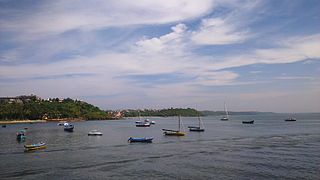
The Argentine Confederation was the last predecessor state of modern Argentina; its name is still one of the official names of the country according to the Argentine Constitution, Article 35. It was the name of the country from 1831 to 1852, when the provinces were organized as a confederation without a head of state. The governor of Buenos Aires Province managed foreign relations during this time. Under his rule, the Argentine Confederation resisted attacks by Brazil, Bolivia, Uruguay, France and the UK, as well as other Argentine factions during the Argentine Civil Wars.

The Battle of Caseros was fought near the town of El Palomar, Buenos Aires Province, Argentina, on 3 February 1852, between the Army of Buenos Aires commanded by Juan Manuel de Rosas and the Grand Army led by Justo José de Urquiza. The forces of Urquiza, caudillo and governor of Entre Ríos, defeated Rosas, who fled to the United Kingdom. This defeat marked a sharp division in the history of Argentina. As provisional Director of the Argentine Confederation, Urquiza sponsored the creation of the Constitution in 1853, and became the first constitutional President of Argentina in 1854.

The United Provinces of the Río de la Plata, earlier known as the United Provinces of South America, a union of provinces in the Río de la Plata region of South America, emerged from the May Revolution in 1810 and the Argentine War of Independence of 1810–1818. It comprised most of the former Viceroyalty of the Río de la Plata dependencies and had Buenos Aires as its capital.

The naval Battle of Juncal took place between a squadron of the newly independent United Provinces of the River Plate under command of William Brown and a squadron belonging to the Brazilian Empire, commanded by Sena Pereira. It spanned two days, from 8 to 9 February 1827, in the waters of the Rio de la Plata.

Carmen de Patagones is the southernmost city in the province of Buenos Aires, Argentina.

The naval Battle of Monte Santiago was fought on 7–8 April 1827, between the Argentine Navy and Brazilian Imperial Navy, during the Cisplatine War. It was a decisive Brazilian victory, with the allied forces losing its best ships. The battle is highlighted by Argentine historians as one of the most courageous and ferocious naval encounters in the country's history. On that day, Sgt. Mayor Francis Drummond died on deck, firing his marooned ship's cannons instead of retreating.

Brigadier General José María Paz y Haedo was an Argentine military figure, notable in the Argentine War of Independence and the Argentine Civil War.

David Jewett is known for his role in the sovereignty dispute between the United Kingdom and Argentina. He was an American naval commander in the Quasi-War with France and following the end of that conflict he offered his services as a Mercenary in both Argentina and Brazil. Licensed as a privateer by the United Provinces of the River Plate to seize Spanish ships, he was later accused of piracy following the seizure of US and Portuguese flagged vessels. He finished his career in the Brazilian Navy, serving under Lord Cochrane and died in Rio de Janeiro in 1842.

Jonas Halstead Coe, sometimes given in Spanish as Comodoro Juan Coe, was an American-born naval commander, notable in the early naval history of Argentina and Uruguay.

Frederico Mariath was an admiral in the Imperial Brazilian Navy who participated in the Cisplatine War and some of Brazil's internal conflicts of the early 19th century.

Juan Bautista Azopardo was a Maltese privateer and military man who fought under the flags of the Netherlands, Spain and Argentina.

The Battle of Martín García was fought from 10 to 15 March 1814 between the forces of the United Provinces of the Río de la Plata under the command of then-Lieutenant Colonel Guillermo Brown, and the royalist forces commanded by frigate captain Jacinto de Romarate, defending the region.

Lucio Norberto Mansilla was an Argentine military man and politician. He was the first governor of the Entre Ríos Province and fought in the battle of Vuelta de Obligado.

José María Pinedo was a commander in the navy of the United Provinces of the River Plate, one of the precursor states of what is now known as Argentina. He took part in the Argentine War of Independence, the Argentine Civil Wars and the Cisplatine War. He is also known for failing to resist the British return to the Falkland Islands in 1833.

ARA King is a World War II era Argentine Navy warship, originally classified as minelayer and later as patrol ship. The vessel is named after Juan King, an Argentine naval officer that served in the Cisplatine War. It is the third Argentine naval ship with this name.

ARA Azopardo is a World War II era Argentine Navy warship, originally classified as patrol boat and later as antisubmarine frigate. The vessel is named after Juan Bautista Azopardo, an Argentine naval officer that served in both the Argentine War of Independence and in the Cisplatine War. It is the third Argentine naval ship with this name.

Enrique Sinclair (1805-1904) was an Argentine military officer of American origin. He had an outstanding performance serving in the Navy of Admiral Brown, participating heroically in the Battle of Juncal.

Cabo Corrientes is a rocky outcrop on the Argentine coast between the Chica and Varese beaches in Mar del Plata, in the extreme southeast of Buenos Aires Province, on the Argentine Sea of the Atlantic Ocean. It is located at the geographical coordinates 38°01′S57°32′W.


























